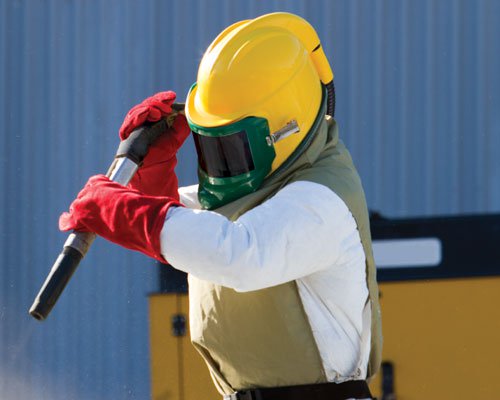
The Sandblasting Techniques Ultimate Guide
When it comes to surface preparation, rust removal, or even artistry on glass and wood, few methods are as versatile and effective as sandblasting. This comprehensive guide will take you through the world of sandblasting techniques, whether you’re a DIY enthusiast or a professional looking to enhance your skills.
What is Sandblasting?
Sandblasting, also known as abrasive blasting, is a process in which abrasive materials are propelled at high speeds to clean, etch, or prepare a surface. The abrasive material, often sand or other abrasive media like glass beads or aluminum oxide, is propelled by compressed air or water. It’s a highly versatile technique used in various industries, from automotive to construction.
Types of Sandblasting Techniques
1. Dry Sandblasting
It is the most common form of abrasive blasting. It involves propelling abrasive material against a surface without the use of water. This technique is widely used for tasks like removing rust, paint, and scale from metal surfaces.
2. Wet Sandblasting
Wet blasting, as the name suggests, involves mixing water with abrasive material before blasting. It’s an effective technique for jobs where dust control and heat reduction are critical. It’s often used in applications such as cleaning delicate surfaces or in abrasive blasting cabinets.
3. Bead Blasting
Bead blasting uses small glass beads as the abrasive material. It’s favored for its ability to produce a smooth, bright finish on surfaces like metal and aluminum. Bead blasting is often used in the aerospace and automotive industries.
4. Soda Blasting
Soda blasting utilizes sodium bicarbonate (baking soda) as the abrasive material. It’s a gentler method ideal for removing paint and graffiti from delicate surfaces like wood and masonry. Soda blasting is non-toxic and doesn’t produce heat, making it suitable for various applications.
5. Airless Sandblasting
Airless sandblasting employs a high-pressure system to propel abrasive materials. It’s particularly effective for heavy-duty applications like removing corrosion and tough coatings from large metal surfaces.
Steps for Effective Sandblasting
Successful sandblasting requires more than just equipment; it demands skill and precision. Here are the steps to follow:
Step 1: Safety First
Before you begin, ensure you’re equipped with the necessary safety gear, including goggles, gloves, and a respirator. Sandblasting can produce hazardous dust and noise, so make sure you’re working in a well-ventilated area.
Step 2: Surface Preparation
Proper surface preparation is crucial. Clean the surface to be blasted thoroughly, removing any contaminants like oil, grease, or loose rust.
Step 3: Equipment Setup
Set up your sandblasting equipment according to the specific technique you’re using. This includes selecting the right abrasive material, adjusting the pressure, and controlling the nozzle distance.
Step 4: Technique
Maintain a consistent nozzle distance and angle for even results. Move the nozzle steadily across the surface, overlapping each pass slightly. Be patient and avoid rushing the process.
Step 5: Inspection and Cleanup
After sandblasting, inspect the surface to ensure it meets your requirements. Clean up the area, disposing of abrasive material and waste safely and responsibly.
Sandblasting Applications
Sand blasting finds applications in various industries:
Automotive Industry
Sand blasting is used to remove old paint, rust, and corrosion from vehicle surfaces before repainting or restoration.
Construction
In construction, sandblasting is essential for preparing surfaces for painting and removing contaminants from concrete and brick.
Artistic Glass Etching
Artists use sandblasting to create intricate designs on glass surfaces, from mirrors to glassware.
Wood Restoration
For wooden surfaces like furniture and historic buildings, sandblasting can remove old finishes and restore the wood’s natural beauty.
Tips for Successful Sandblasting
- Choose the Right Abrasive: Select the appropriate abrasive material for your project, considering the surface material and the desired finish.
- Maintain Equipment: Regularly inspect and maintain your sandblasting equipment to ensure it functions correctly and safely.
- Practice Safety: Always prioritize safety by wearing the right protective gear and working in a well-ventilated area.
- Proper Cleanup: Dispose of abrasive material and waste properly to minimize environmental impact.
- Skill Development: Sand blasting is a skill that improves with practice. Start with small projects before tackling larger ones.
Conclusion
Sand blasting is a versatile technique with a wide range of applications. Whether you’re restoring a classic car, preparing a surface for painting, or creating art on glass, understanding different sand blasting techniques is essential for achieving the desired results. Remember to prioritize safety, choose the right abrasive material, and practice your skills. With the knowledge gained from this guide, you’re well on your way to becoming a sandblasting expert.




Most Commented